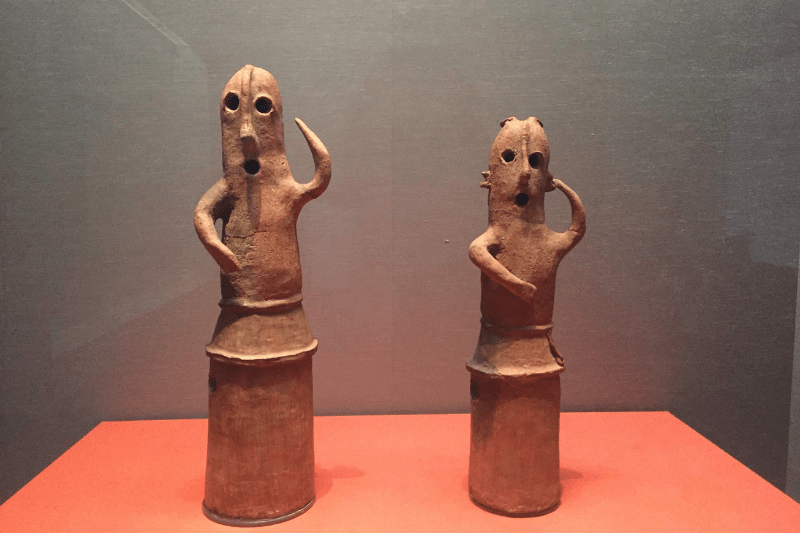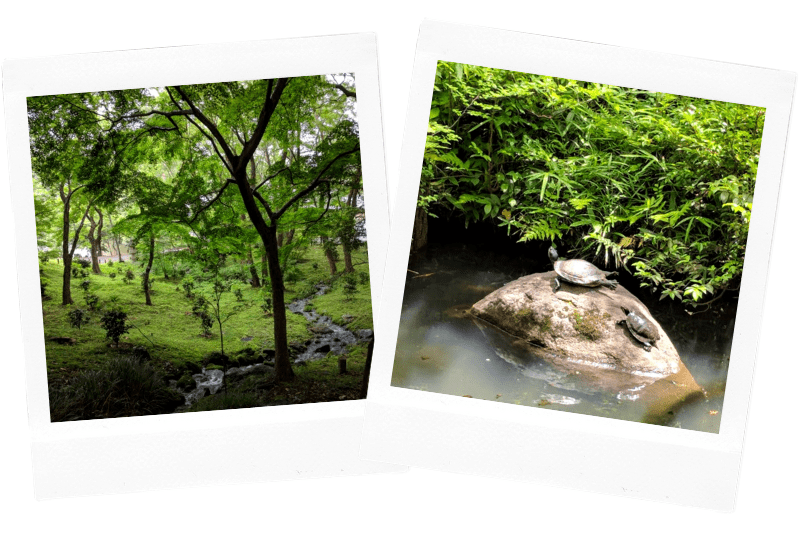Discover the truth about Tokyo: Inside Tips from a Livability Expert
This post will show you what living in Tokyo is like.
It covers:
- Housing
- Food
- People
- Budget
- Things to do
- and more!
Let’s check out Japan!

Japan is a one of a kind type place. You can find pristine nature and mega cities that never sleep. It’s a country that has preserved its traditions and holds them dear.
It’s also a very different place for visitors and locals. At first glance, it’s all cat cafes and Mario Kart experiences. But once you settle in and do things like get a cell phone plan, join a gym and go grocery shopping do you discover the numerous and often implicit rules that hold things together. The unspoken rules aren’t obvious until you spend some time there. They’re both a blessing and curse as you’ll find out later in this post.

Yes, there’s no place like it. There are elements that are similar to Korea, but even those two countries can be night and day.
There’s so much to do and see in Tokyo and Osaka that I was rarely home. Housing in Japan encourages you to do so. It’s not meant for people who work at home.
I’ve been going to Japan since 2004 and spent a year living in Tokyo, Osaka and Chiba with trips to Sapporo.
Brief History
Japan has one of the more unique histories in the world. Since the sea provides a natural barrier to outside invaders and the islands have few natural resources, the people living there were mostly left to their own devices.
Picture England without the Roman conquest, Norman invasions (two attempts by the Mongol Empire in Japan were unsuccessful thanks to miraculous typhoons giving rise to the term “Kamikaze”, or divine wind) and Christianity. Imagine if the warlords who ruled the country and legitimized themselves by claiming divine right didn’t have outside forces to contend with and could rule unchecked. You can probably picture how different England would be.
During the last millennium, Japan was actually under military rule for 750 years. This explains some of the strict social controls in daily life.
Japan has been populated by different indigenous groups for at least 35,000 years. The earliest being the Jomon from somewhere on the Asian mainland who made unique rope-patterned pottery. They were displaced by the Yayoi who came from the Korean peninsula around the 10th to 6th century B.C. The accepted theory is that Jomon people were driven north and split into several tribes including the Ainu, who controlled the Northern Island of Hokkaido until the year 1800.

The Kofun period in 250-583 AD gave rise to aristocratic warlords and trade with China.
Budhism made it’s may to Japan and was adopted by the noble class, while villagers practiced Shinto, which is the dominant belief system to this day. All Japanese people are registered at Shinto temples from birth in what’s known as the Danka system.
The Heian period (794-1185) saw the formation of the samurai class and rapid development of Japanese culture.
Shogun, or Samurai lords, took over the government from 1185-1868. For 700 years the country had an emperor in name only and lived under military rule.
Kyoto was the capital and center of culture until it was sacked by the Tokugawa Shogunate in 1392. Edo (Tokyo) became the new capital and an invasion of the Korean peninsula was launched shortly after. The new Shogunate were considered less than sophisticated by the former rulers, so they moved all the artisans from Kyoto to Edo and created their own unique culture that endures today.
The dialect spoken in the palace during Edo is said to be the origin of “standard” Japanese spoken today.

Not wanting to repeat history, the new Shogunate created strict rules for Daimyo (lords) who controlled other provinces and all the classes. Daimyo were never allowed to build more than a few ships, had to visit Edo every year and pay tribute with precious metals and labor for public works. The most powerful ones were kept on a short leash and 70% of land in Edo, which was basically a fortress with complex defenses, was reserved for them and their families.
This left little room for everyone else and housing was forced to be small. Everything from your house size, clothing and how much food you ate was controlled by the shogun.
Edo saw culture flourish with book printing that gave rise to manga today, colorful art and vibrant theatre.
***Disclaimer***
This post is based on my experiences as an off-white westerner who has been living abroad since 2006. How you’re treated depends on who you are, how you behave and which street you’re on. Experiences may vary.
Living conditions in Japan

- Weather varies a lot by region and is generally warmer in the south and colder in the north. There are four distinct seasons that you need to dress appropriately for.
- Internet is surprisingly hard to come by. You get unlimited data but it caps after a few gigs, leaving it pretty much unusable, and gets restored in a few days. It’s difficult to get a data plan but you can rent a WiFi egg that’s convenient if you’re on vacation, but tricky to use for work. I found myself going to cafes when I had to download a large file.
- Transportation is good but expensive. There are public and private subways that have different pay systems. Taxis are extremely expensive (it’s a sort of welfare for the old men who drive them) and it’s pretty much impossible for non-Japanese people to rent a car. There absolutely is no Uber or Grab.
- Safety is hardly a concern in Japan unless you start messing about in Kabukicho. I didn’t feel unsafe for a moment. You really can leave all your belongings on a table and find them untouched in an hour.
- Water is safe to drink out of the tap. In larger cities like Tokyo, tap water has a slight chlorine odor, so you might want to run it through a Brita filter first.
- Sanitation is great overall and people in some areas wake up early to pick up trash. There’s a strong sense of communal pride in living in a clean place.
- Groceries are great outside of Tokyo. I didn’t look for online shopping, but there’s usually a large Aeon with great quality food for low prices. My Sunday morning tradition was buying sushi, since the quality was still better than what you’d find in restaurants abroad.

Japan is pretty consistent when it comes to living conditions. Most neighborhoods are clean and safe. I even stayed in what locals consider a dodgy neighborhood in Osaka, and it was less scary than downtown L.A.
You may feel slightly claustrophobic after a while, because space is treated as a valuable commodity.
Joining a gym was a bit tricky. Doors usually open with an app and I actually learned enough Japanese to explain my intention when I first went there. There was even an interview of sorts to make sure I wouldn’t start fights, grunt too much or have visible tattoos. The gym equipment had timers on them and small towels so you don’t stay too long and wipe up after. You also have to bring an extra pair of dedicated gym shoes so as not to dirty the floor. I don’t think I could’ve started a fight even if I tried, because people were so overly considerate it became stifling. It had an oxygen chamber and a very elaborate sauna and shower scheduling system that I opted out of, much to the relief of the staff.

Coffee quality is high on average as is everything else, even baked goods like Croissants. Cafes are really nice and quiet outside of Tokyo.
Nightlife can be fun and there are many neighborhoods to choose from with different vibes.
There’s some gorgeous forests, mountains and lakes outside the cities that are worth taking a look at. Japan on the whole preserves their nature well. This might have something to do with one of the tenants of Shinto that instills respect for nature.
People are even polite in touristy areas where hawkers might yell at you from across the street in other countries.
Expect to walk a bit since ridesharing is not a thing.
Housing

Housing is not Japan’s strong suit. Most of it is old but well maintained. Things are often from the 90s, but in still working order.
Japan was futuristic in the 80s and 90s with cell phones way ahead of their time and top notch electronics. Now, it can feel like living in a time capsule with fax machines and electronic dictionary stores. Even tiny apartments come with bidets and cool tubs that fill up on a timer along with a variety of functions.
It’s tricky to rent a house as a foreigner, so you’re left with a few options:
- hostel
- share house
- Airbnb which was severely restricted in 2019
The value is not there for the price and you can expect to have very uncomfortable furniture, if any at all.
For someone like me who works from home, it wasn’t ideal. There were many nice cafes nearby, even in the quiet neighborhood I lived in. Working on a laptop is tolerated, but something they’re unfamiliar with. They most likely thought I was unemployed and applying for a job.
Food

Ramen | Best Katsu | Unadon
Japanese food on average is high-quality, delicious and healthy. You can go pretty much anywhere and have a good to fantastic meal. A Japanese friend of mine was shocked while living in London at the quality of the average restaurant.
It’s second only to France in number of Michelin starred restaurants (which is understandable considering the rating originates there). Even a few Ramen houses have Michelin stars. I don’t put much stock in that system and found better places that were unrated.
I was fortunate enough to have local friends who took me to some fantastic restaurants that are hard to find.
Even fast food is clean and somewhat healthy in Japan. I usually avoid it but I had to try places like Carl’s Jr. and KFC(it’s Christmas tradition in Japan to eat there) to see how they were. Fast food chains in Japan were easily the least greasy and best assembled versions I’ve tried.
Convenience store microwave meals are a cut above what you’ll find in other countries. I spent the first few days in Japan just eating at them and drinking beer in the streets (in my defense, I was only 21 years old and it’s legal there).
I did find myself missing anything more intense than cayenne pepper, because spice and intense flavors aren’t popular in Japan. This is understandable since the spice trade didn’t always reach the islands, and people were limited in what they could eat for hundreds of years.
People
People are generally friendly to tourists. Tokyo is a big city so don’t expect anyone to come hold your hand when you need directions.
Japanese people outside of Tokyo are nice enough, but it can difficult to build a relationship. People who ran restaurants were very welcoming, but I spoke Japanese to them.
Going from a country like Colombia to Japan is a huge culture shock in terms of inclusivity.
I never felt overt hostility for being a foreigner, but little cues reminded me that I stood out. I was gently nudged for taking up too much space in a subway seat a few times. I think I was expected to hunch my shoulders to make myself smaller.
Japanese people demand quality in most things. This is great when you’re the customer, but it becomes an entirely different matter when you’re providing a service. I can only imagine how tough working there is.
Cost of living

You can get away with living pretty much anywhere in Japan, so I ended up where the housing had the most value.
If you don’t mind living in a dark shoebox and cooking all your meals, you could probably squeeze by on 1,500 USD a month. If you want to live semi-well with a bed and natural light, you’re probably looking at $2,500 a month minimum. Once you settle in and start cooking, you can control your spending a lot more. Decent housing can be found for $800 to 2,500 USD a month.
Budget

Left: Beautiful and delicious Japanese meal | Right: Where they buy their cool hats
$1,500 USD to $2,500 USD a month depending on your housing quality and where you live.
Unique experiences

Finish your night out with Parfait. Have lots of ice cream!
Sights
Tokyo is a concrete maze with high-rise buildings and some beautiful parks and green spaces. There are massive bamboo forests and open fields outside the city that are gorgeous to look at.
Many older but surprisingly well-maintained buildings from the 80s and 90s built during the economic boom.
Vermillion (red-orange) Shinto temples can be spotted around the country.
Convenience stores (konbini) like Family Mart, Lawson and 7-11 become magical places that you actually want to enter.
Sounds
Japan is more about what you don’t hear. You won’t hear people leaning on their horns, even during rush hour in a city of over 10 million people.
Smells
Tatami, dashi, soy sauce and polite cigarette smoke.
Things to do
Stay at a Ryokan and be treated to a feast and the most relaxing sleep you’ll ever have on the floor.
Order a meal from a vending machine.
Eat in a restaurant with a smoking section that kind of works.
Go to Sukiji Fish Market but avoid the warehouse area. There are nice restaurants next door.
Rent an e-bike and ride around the city.
Visit the Edo museum and the Sumo stadium next door.
See the adorable seals at the Osaka Aquarium. They even have a massive tank with Whale sharks and Sunfish.
Rating
Difficulty: ★★★★★☆☆☆☆☆ (5/10)
It helps to have some Japanese skills and experience in a big city, but it’s very safe so you can make a few mistakes.
Live: ★★★★★★☆☆☆☆ (6/10)
Life is pleasant enough, but housing brings down the score as well as difficulty getting things done as a non-local. Food quality and things to do boost the score.
Visit: ★★★★★★★★☆☆ (8/10)
Japan shines in consistency more than intense excitement, but you’ll find a lot of interesting and fun things to do.
Did we miss anything?
Japan is a great place to live or visit.
Let us know your Japan tips below!








